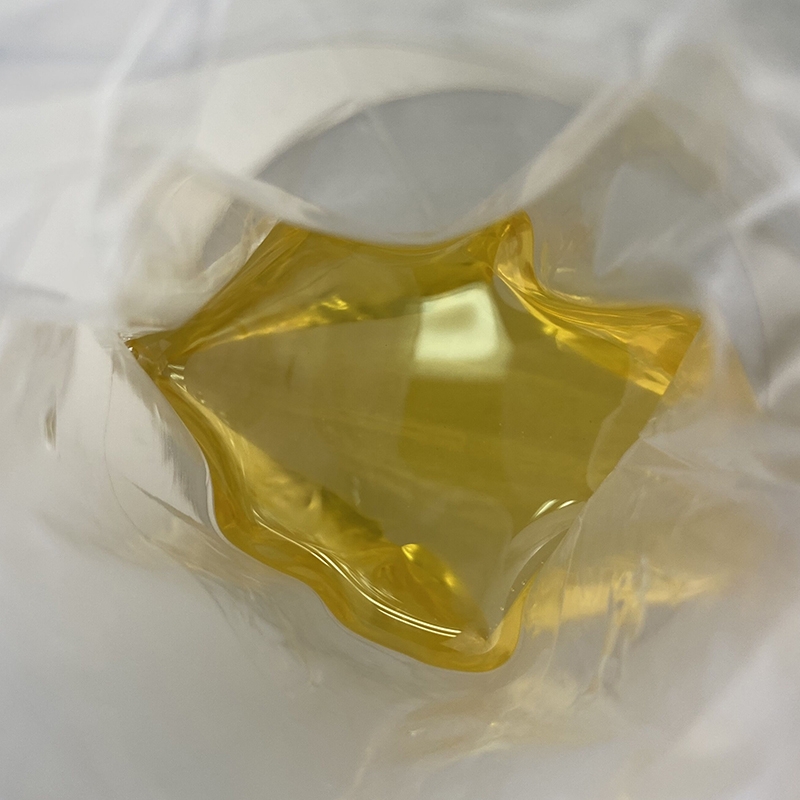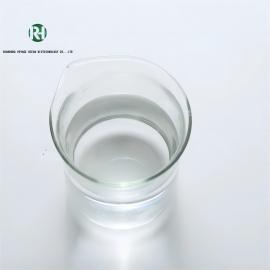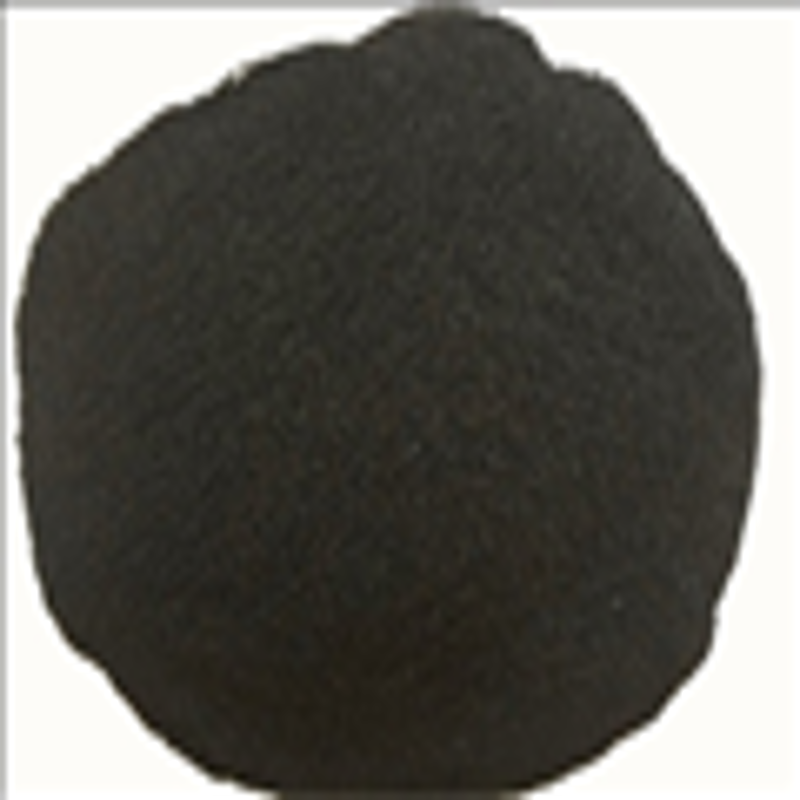-
Categories
-
Pharmaceutical Intermediates
-
Active Pharmaceutical Ingredients
-
Food Additives
- Industrial Coatings
- Agrochemicals
- Dyes and Pigments
- Surfactant
- Flavors and Fragrances
- Chemical Reagents
- Catalyst and Auxiliary
- Natural Products
- Inorganic Chemistry
-
Organic Chemistry
-
Biochemical Engineering
- Analytical Chemistry
- Cosmetic Ingredient
-
Pharmaceutical Intermediates
Promotion
ECHEMI Mall
Wholesale
Weekly Price
Exhibition
News
-
Trade Service
The "pearl" of pearl milk tea refers to the small black balls inside.
The Q bullets have a biting strength.
When drinking milk tea, many young people like to suck up the pearls with a straw and chew them slowly
.
However, recently a CT photo of a real human stomach with "pictures and truth" went viral on social networks, and dense white spots can be seen in the photo
.
According to netizens, the culprit is the "pearls" in bubble tea, because these "pearls" are made of plastic and may even cause intestinal obstruction
.
Blackheart producers are abhorrent, but they cannot completely demonize "pearls".
Ruan Guangfeng, a science author and a master of nutrition and food safety, pointed out that regular "pearls" are actually starchy products that are not difficult to digest.
It's not made of plastic
.
Qingdao Evening News/Handheld Qingdao/Qingwang Reporter GaoJingwen's "pearls" are mainly made of starchRuan Guangfeng pointed out that the "pearls" in bubble milk tea are actually powder round products made with starch as the main raw material
.
"If you use sticky raw materials such as glutinous rice and arrowroot powder, it is more difficult to digest.
If you swallow it in your stomach without chewing,'white spots' may appear under CT scan
.
" Ruan Guangfeng explained
.
For taste, some wheat protein is also used to make pearls
.
Wheat protein has good hydration properties and structural properties, which can better combine with starch, and at the same time make the starch "pearls" more elastic and delicious
.
According to Ruan Guangfeng, wheat protein is a kind of protein.
Except for some people who are allergic to wheat, wheat protein does not cause any harm to the human body
.
In addition to the ingredients contained in the "pearl" itself, all starch foods will produce dextrin after being eaten, and dextrin does not need to worry about safety issues
.
Dextrin is a degradation product obtained by incomplete hydrolysis of starch.
We usually eat and eat starchy foods such as bread.
After entering the digestive tract, it will gradually decompose into dextrin and then decompose into glucose before it can be used by the human body
.
Regular additives are safer
In order to make better "pearl" products, manufacturers will also use some food additives in the processing process, mainly sweeteners, coagulants, stabilizers and thickeners, such as Glauber's salt, magnesium chloride, carboxymethyl cellulose sodium
.
Hearing about additives, everyone may respond to it-unhealthy
.
However, Ruan Guangfeng used data analysis to point out that these chemicals are in normal use
.
For example, cyclamate is a chemically synthesized sweetener without energy.
China's national standards stipulate that the amount of cyclamate used in candies shall not exceed 0.
65 grams per kilogram
.
The safe value of sodium cyclamate is 11 milligrams per kilogram of body weight per person per day.
That is to say, if a person weighing 60 kilograms consumes 660 milligrams per day, long-term consumption will not have adverse consequences
.
And the amount of pearls in a cup of milk tea is estimated to be up to 20 grams, which means that you have to drink more than 50 cups of milk tea before your cyclamate intake may exceed the safe value
.
Glauber's salt is also a common food additive and is used as a processing aid
.
According to China's national standards, Glauber's salt can be used as a processing aid in various food processing processes, and the residual amount does not need to be limited
.
The coagulant tastes bitter and will not add too much.
Magnesium chloride is added to the "pearl" as a coagulant and stabilizer.
It is a common food additive and is often used in soy products .
In the process of making tofu, in order to form a blocky semi-solid state, a coagulant must be added.
Usually, brine is used in the north, and gypsum is generally used in the south .
According to the national standard GB2760-2014, when magnesium chloride is used in bean products, its maximum use amount should be used in an appropriate amount according to production needs .
A coagulant is also added when making "pearls" .
However, the scope of use of magnesium chloride does not include "pearl", if it is used beyond the scope of use .
However, this does not necessarily have a safety issue.
Consumers should not worry too much about the business adding too much.
"Magnesium chloride has a strong bitter taste, and the usual addition amount is less than 0.
1%.
If this thing is added too much, it will be so delicious.
The milk tea? Ruan Guangfeng pointed out that if the "pearl" is produced in accordance with the relevant national standards, the additives added will not be harmful to the human body at all
.
There have been rumors that in order to increase the elasticity of the "pearl", a polymer substance, namely plastic, should be added
.
It is not entirely true that macromolecular substances are plastics.
In fact, starch and wheat protein are also macromolecular substances.
These substances are easily digested and do not deposit in the stomach
.
The cause of intestinal obstruction is only a special case.
In the photo messages circulating on the Internet, netizens believe that such indigestible "pearls" can cause intestinal obstruction if eaten too much .
Ruan Guangfeng believes that this is indeed possible, but it can only be regarded as a special case .
Intestinal obstruction, in layman's terms, is the intestinal obstruction .
"The causes of intestinal obstruction are diversified, and are related to the gastrointestinal absorption function of the patient and the food ingested .
" People with poor gastrointestinal function, or children or the elderly, drink a lot of Pearl milk tea does have risks .
If you swallow the "pearls" in milk tea, it will not only cause intestinal obstruction, but also risk of suffocation .
Therefore, you should chew slowly when eating, especially foods like "pearls" .
But this does not mean that the online opinions are correct .
The process of food being discharged from the stomach into the duodenum is called gastric emptying.
Generally, for mixed foods, it takes 4-6 hours to completely empty the stomach .
In the online heat transfer pictures, taking a CT scan of the stomach after drinking pearl milk tea for only half an hour does not prove the danger of pearls, nor can it be concluded that pearl milk tea will cause intestinal obstruction .
"Of course, the saturated fat and sugar content in milk tea is a lot.
Even if the'pearl' is safe to use, you should not drink too much. .
Ruan Guangfeng reminded
.
Related links "Pearls" should be worried or not "made of plastics" In 2013, the Shenzhen Food and Drug Administration had sampled 14 batches of "pearl" samples, and the results showed that 6 batches appeared.
Excessive food additives, including excessive use of benzoic acid, sorbic acid and sodium saccharin, excessive use of dehydroacetic acid, are mainly used for preservation and sweetening .
From the test results of starch and water content, it is in "pearl" The possibility of adding plastics is unlikely, and no plasticizer ingredients have been detected .
It can be seen that for "pearls" produced that do not meet the relevant national standards, what really worry about should not be whether it contains plastic or not.
The question is whether too much antioxidant is added, or whether environmental sanitation is strictly controlled during production and processing .
The Q bullets have a biting strength.
When drinking milk tea, many young people like to suck up the pearls with a straw and chew them slowly
.
However, recently a CT photo of a real human stomach with "pictures and truth" went viral on social networks, and dense white spots can be seen in the photo
.
According to netizens, the culprit is the "pearls" in bubble tea, because these "pearls" are made of plastic and may even cause intestinal obstruction
.
Blackheart producers are abhorrent, but they cannot completely demonize "pearls".
Ruan Guangfeng, a science author and a master of nutrition and food safety, pointed out that regular "pearls" are actually starchy products that are not difficult to digest.
It's not made of plastic
.
Qingdao Evening News/Handheld Qingdao/Qingwang Reporter GaoJingwen's "pearls" are mainly made of starchRuan Guangfeng pointed out that the "pearls" in bubble milk tea are actually powder round products made with starch as the main raw material
.
"If you use sticky raw materials such as glutinous rice and arrowroot powder, it is more difficult to digest.
If you swallow it in your stomach without chewing,'white spots' may appear under CT scan
.
" Ruan Guangfeng explained
.
For taste, some wheat protein is also used to make pearls
.
Wheat protein has good hydration properties and structural properties, which can better combine with starch, and at the same time make the starch "pearls" more elastic and delicious
.
According to Ruan Guangfeng, wheat protein is a kind of protein.
Except for some people who are allergic to wheat, wheat protein does not cause any harm to the human body
.
In addition to the ingredients contained in the "pearl" itself, all starch foods will produce dextrin after being eaten, and dextrin does not need to worry about safety issues
.
Dextrin is a degradation product obtained by incomplete hydrolysis of starch.
We usually eat and eat starchy foods such as bread.
After entering the digestive tract, it will gradually decompose into dextrin and then decompose into glucose before it can be used by the human body
.
Regular additives are safer
In order to make better "pearl" products, manufacturers will also use some food additives in the processing process, mainly sweeteners, coagulants, stabilizers and thickeners, such as Glauber's salt, magnesium chloride, carboxymethyl cellulose sodium
.
Hearing about additives, everyone may respond to it-unhealthy
.
However, Ruan Guangfeng used data analysis to point out that these chemicals are in normal use
.
For example, cyclamate is a chemically synthesized sweetener without energy.
China's national standards stipulate that the amount of cyclamate used in candies shall not exceed 0.
65 grams per kilogram
.
The safe value of sodium cyclamate is 11 milligrams per kilogram of body weight per person per day.
That is to say, if a person weighing 60 kilograms consumes 660 milligrams per day, long-term consumption will not have adverse consequences
.
And the amount of pearls in a cup of milk tea is estimated to be up to 20 grams, which means that you have to drink more than 50 cups of milk tea before your cyclamate intake may exceed the safe value
.
Glauber's salt is also a common food additive and is used as a processing aid
.
According to China's national standards, Glauber's salt can be used as a processing aid in various food processing processes, and the residual amount does not need to be limited
.
The coagulant tastes bitter and will not add too much.
Magnesium chloride is added to the "pearl" as a coagulant and stabilizer.
It is a common food additive and is often used in soy products .
In the process of making tofu, in order to form a blocky semi-solid state, a coagulant must be added.
Usually, brine is used in the north, and gypsum is generally used in the south .
According to the national standard GB2760-2014, when magnesium chloride is used in bean products, its maximum use amount should be used in an appropriate amount according to production needs .
A coagulant is also added when making "pearls" .
However, the scope of use of magnesium chloride does not include "pearl", if it is used beyond the scope of use .
However, this does not necessarily have a safety issue.
Consumers should not worry too much about the business adding too much.
"Magnesium chloride has a strong bitter taste, and the usual addition amount is less than 0.
1%.
If this thing is added too much, it will be so delicious.
The milk tea? Ruan Guangfeng pointed out that if the "pearl" is produced in accordance with the relevant national standards, the additives added will not be harmful to the human body at all
.
There have been rumors that in order to increase the elasticity of the "pearl", a polymer substance, namely plastic, should be added
.
It is not entirely true that macromolecular substances are plastics.
In fact, starch and wheat protein are also macromolecular substances.
These substances are easily digested and do not deposit in the stomach
.
The cause of intestinal obstruction is only a special case.
In the photo messages circulating on the Internet, netizens believe that such indigestible "pearls" can cause intestinal obstruction if eaten too much .
Ruan Guangfeng believes that this is indeed possible, but it can only be regarded as a special case .
Intestinal obstruction, in layman's terms, is the intestinal obstruction .
"The causes of intestinal obstruction are diversified, and are related to the gastrointestinal absorption function of the patient and the food ingested .
" People with poor gastrointestinal function, or children or the elderly, drink a lot of Pearl milk tea does have risks .
If you swallow the "pearls" in milk tea, it will not only cause intestinal obstruction, but also risk of suffocation .
Therefore, you should chew slowly when eating, especially foods like "pearls" .
But this does not mean that the online opinions are correct .
The process of food being discharged from the stomach into the duodenum is called gastric emptying.
Generally, for mixed foods, it takes 4-6 hours to completely empty the stomach .
In the online heat transfer pictures, taking a CT scan of the stomach after drinking pearl milk tea for only half an hour does not prove the danger of pearls, nor can it be concluded that pearl milk tea will cause intestinal obstruction .
"Of course, the saturated fat and sugar content in milk tea is a lot.
Even if the'pearl' is safe to use, you should not drink too much. .
Ruan Guangfeng reminded
.
Related links "Pearls" should be worried or not "made of plastics" In 2013, the Shenzhen Food and Drug Administration had sampled 14 batches of "pearl" samples, and the results showed that 6 batches appeared.
Excessive food additives, including excessive use of benzoic acid, sorbic acid and sodium saccharin, excessive use of dehydroacetic acid, are mainly used for preservation and sweetening .
From the test results of starch and water content, it is in "pearl" The possibility of adding plastics is unlikely, and no plasticizer ingredients have been detected .
It can be seen that for "pearls" produced that do not meet the relevant national standards, what really worry about should not be whether it contains plastic or not.
The question is whether too much antioxidant is added, or whether environmental sanitation is strictly controlled during production and processing .







